| Constellations: Cassiopeia, Corona Borealis, Cygnus, Delphinus, Hercules, Lyra, Sagittarius, Scorpius, Serpens Galaxy: Andromeda Asterisms: Coathanger/Collander 399/Brocchi's Cluster, Keystone of Hercules, Square of Pegasus, Teapot Stars: Albireo, Lyra Epsilon 1&2 Messier Objects: M6 (Butterfly Nebula), M7 (Ptolemy Cluster), M8 (Lagoon Nebula), M13 (Hercules Cluster), M16 (Eagle Nebula), M17 (Swan Nebula), M22 (NGC 6656), M25 (IC4725), M31 (Andromeda Galaxy) |
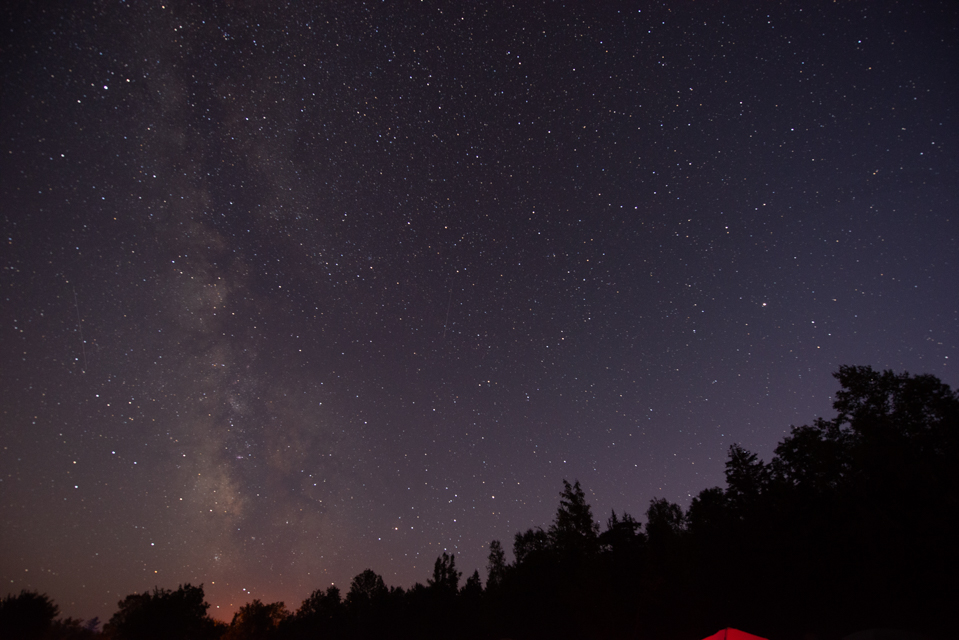 |
Location: Nova East Star Party, Smileys Provincial Park
Date: 2015-08-14
Time: 9:35 - 11:30 PM ADT
Equipment: Binoculars 10x30 IS
Magnification: x10
Seeing: Very Good
Transparency: Very Good
Clear with occasional clouds. 12° C, humid with little or no wind. I attended Tony Schellinck's binocular table and found quite few objects.
| M31 (Andromeda Galaxy) First up was finding Andromeda. By finding Cassiopeia, we used the arrow of the larger 1/2 "W" to find the constellation. He also showed us how to find it using the Square of Pegasus, going over two lines of stars, then going up the 2nd line to the 3rd "star" that's was kind of fuzzy - that was Andromeda. |
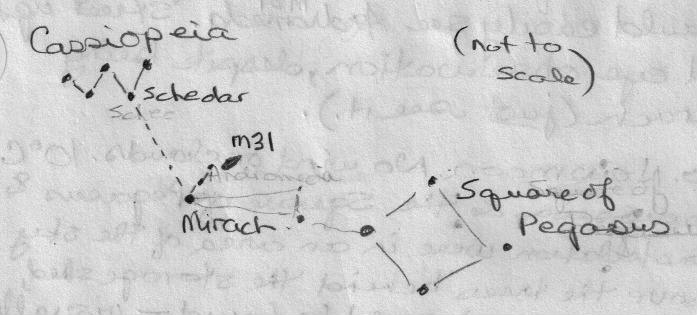 |
|
I followed Tony's directions to find Cygnus naked eye, then the directions on how to locate Albireo - the double star that I could see had a yellow-gold component and the other was blue. |
 |
Tony's directions to find the Coathanger:
Locate Deneb, go down the neck of the swan (Cygnus) to Albireo. The Coathanger (aka Collander 399) is ~ 1.5 FOV from Albireo. By going down about 45° from Albireo, we would come down to an upside-down coathanger. This was really cool! It was very easy to see the upside-down hanger - 6 stars forming the straight line of the hanger with 4 stars forming the hook that curved towards the right. It was slanted at about 40° angle in the FOV. The hook began at the 4th star from the left. Thanks, Tony Schellinck!
He also showed us to find Vega in Lyra and the double-double of Lyra1 Epsilon and Lyra2 Epsilon.
Going towards the south end of the Milky Way, he pointed out Serpens, Scorpius and Sagittarius. After explaining two types of star clusters (globular & open) and nebula, he showed us how to find M8, M17, M22 and M25 in Scorpius along with M16 in Serpens and M6 & M7 in Scorpius.
M6 (Butterfly Nebula):
Time: 9:48 PM ADT
Equipment: Binoculars 10x30 IS
Magnification: x10
S&T Ref Chart: 56, 58, 67, 69, J
The grey smudge appeared and was easily viewed. There are two ways to find M6:
a) Find Kaus Australis in the Teapot. Go to the right 1 FOV. Put that point on left of FOV and go right for 1/2 FOV. M6 should be in the middle of your view.
b) Take the distance from Theta (θ) to Kaus Media. Following the same direction, go 1.5 times that distance from Kaus Media.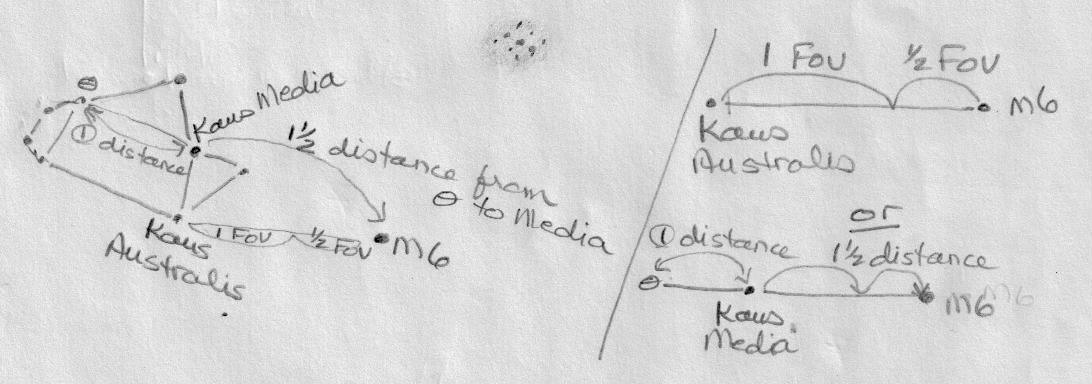
| M7: (Ptolemy Cluster, NGC 6475) Time: 9:48 PM ADT Equipment: Binoculars 10x30 IS Magnification: x10 S&T Ref Chart: 58, 67, 69, I Follow the base of the Teapot out 1.5 FOV from Kaus Australis. Large bright open cluster easily seen visually and very bright in binoculars. Multiple stars seen in FOV, some brighter than others. |
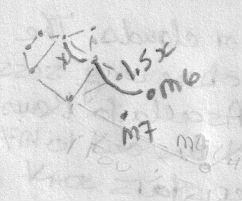 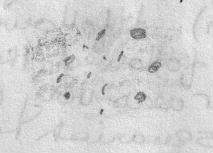 |
M13 (Hercules Cluster)
Time: 9:45 PM ADT
Equipment: Binoculars 10x30 IS
Magnification: x10
S&T Ref Chart: 52, 54
This was my 1st finding of M13. Tony Schellinck said to locate Corona Borealis to locate the Keystone of Hercules. M13 is located on the western side, approximately 1/3 of the way between Eta Hercules and Zeta Hercules. NOTE: Following the curve of the Corona also points to M13.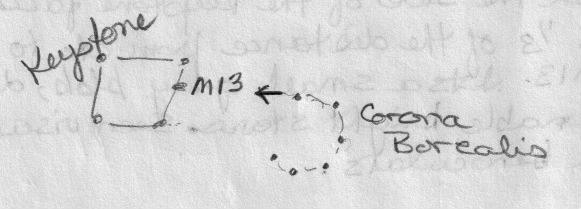
|
M16 (Eagle Nebula), M17 (Swan Nebula) & |
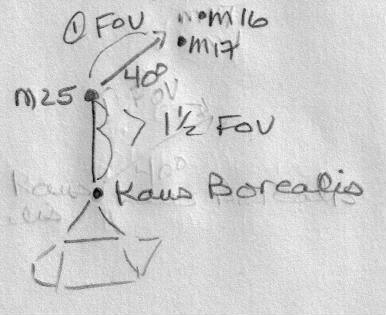 |
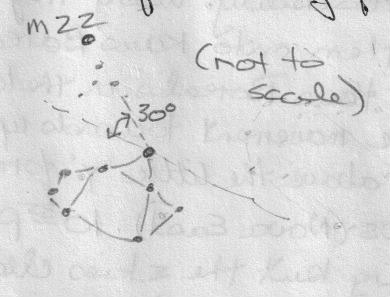 |
M22: |
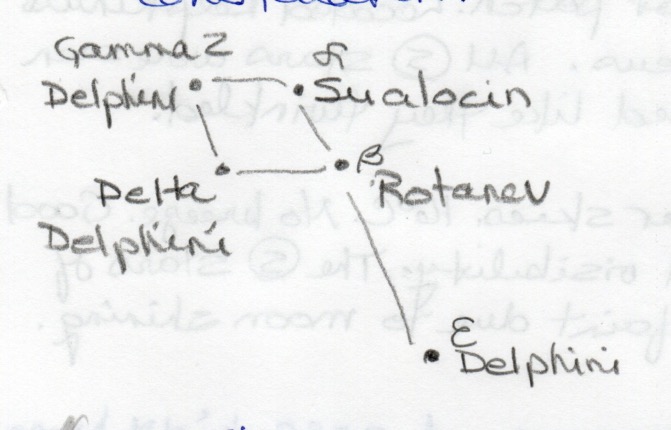 |
Delphinus:
|
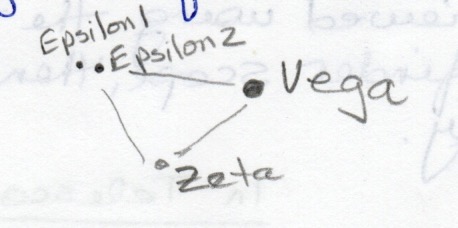 |
Lyra: |